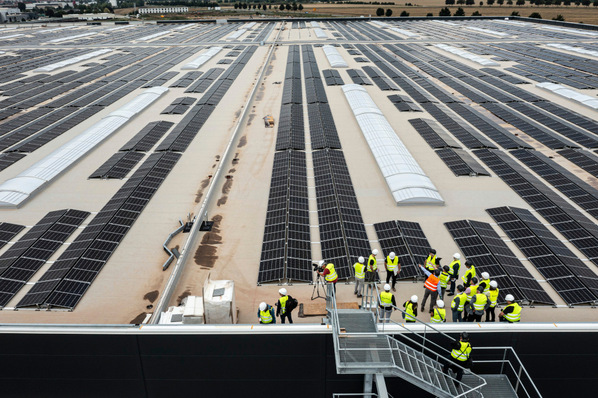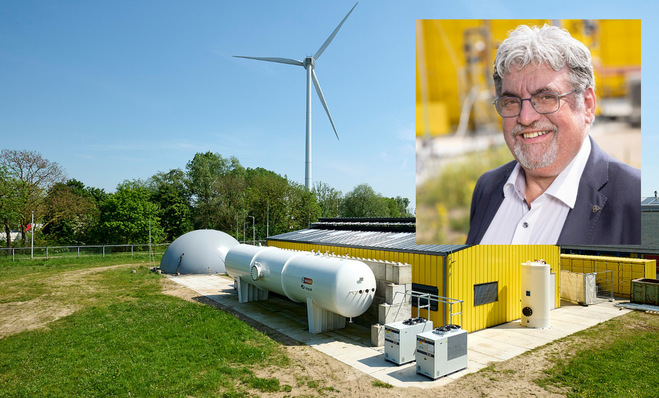Agrivoltaics may be gaining attention in Italy, but a signficant gap remains between planning and real-world implementation. On average, it takes two to three years for a project to move from approval to commissioning. That pace is too slow given the urgency of climate change. By 2021, just 34.7 hectares of agrivoltaic systems had been installed nationwide, with a total capacity of 7 megawatts.
By comparison, China installed nearly 2 gigawatts of agrivoltaic capacity over the same period. That growth was enabled by a far simpler and faster approval process under strong state control. In Italy and much of Europe, procedures remain slow and complex. The message is clear: we must accelerate. In practice this means not only approving more projects, but streamlining the entire process and committing to major investment in grid infrastructure.
1,1 billion euros for Italian Agri-PV
The Italian government announced a breakthrough for agrivoltaic projects in 2023, starting with a so-called implementing decree. A total of 1.1 billion euros can be channelled into agrivoltaic development through special funds from the "Next Generation EU" programme. The aim of the funding is to install plants with a combined capacity of 1.04 gigawatts and an expected annual output of around 1,300 gigawatt hours by 2026.
The stated aim is to reduce energy supply costs for the agricultural sector, which currently account for more than 20 percent of operating expenses, and to improve the climate and environmental performance of Italian farming. This would correspond to a reduction of 0.8 million tonnes of CO₂. The fund is specifically intended to offer non-repayable grants covering up to 40 percent of construction costs for systems defined as “advanced agrivoltaics”.
According to the Integrated National Energy and Climate Plan (INEK), Italy needs 52 gigawatts of renewable energy capacity by 2030 to align with Europe’s climate neutrality targets. Reaching this goal will require a substantial tightening of the national legal framework in the near future.
Video: Dr Erich Merkle of GridParity: AgriPV - Transparent complete systems für farmers
Otherwise, fundamental misunderstandings about photovoltaics will persist and continue to delay the rollout of new installations. One common misconception is the distinction between agrivoltaics and ground-mounted systems. Agrivoltaics refers to PV modules installed on active farmland, allowing agricultural use to continue beneath the panels. Ground-mounted systems, by contrast, are typically sited on land that is unsuitable or only marginally suitable for farming. These areas often retain a natural character, which can have a positive impact on biodiversity. Healthy ecosystems, supported by biodiversity, are essential to human life — providing clean air, fertile soil and safe drinking water.
Income growth of 20% for farmers
Agrivoltaic systems leave soils unsealed, an important factor in times of increasing water scarcity. In this respect, agrivoltaics can play a key role in climate change mitigation. With longer dry seasons and more frequent storms, farmers are among those hardest hit by shifting conditions. As harvests become more unpredictable, the additional income from PV systems offers a way to stabilise farm revenues. Photovoltaics also contribute directly to climate action. They emit no harmful pollutants and are currently the most cost-effective way to generate electricity over the long term.
Download our free special issue Solar power for farmers and by farmers
Photovoltaic systems can also contribute to greater biodiversity under certain conditions. This applies in particular to installations on agricultural land, where species diversity is often low. Here, PV systems can encourage more natural land management and habitat development. However, achieving such benefits depends on how the systems are planned and maintained. Specific measures as well as broader strategies are needed to maximise positive impacts on local flora and fauna.
Sens and Peridot Solar launch large-scale agri-PV project in Sicily
Agrivoltaic systems can offer farmers immediate advantages when installed on agricultural land. Photovoltaic panels provide shade that helps protect crops from excessive heat and water stress during increasingly hot and dry summers. Studies have shown that such systems can reduce agriculture’s water footprint by up to 70 percent per year, saving around 5 million litres of water per hectare annually. In addition, international research suggests that agrivoltaics can boost farmers’ income by as much as 20 percent through secondary effects. According to ENEA, product quality may also improve under solar installations. For instance, lemons grown in partial shade have been found to be significantly larger and juicier.
Fostering climate protection and supply security
Despite the clear benefits of agrivoltaics, project developers in Italy still face resistance from authorities when seeking approval for new installations. Objections typically refer to landscape protection and changes in land use. Yet from a broader perspective, renewable energy contributes directly to preserving the landscape by addressing the energy and climate crisis. At CCE, we see rural photovoltaics as a form of infrastructure that can support both agricultural landscapes and farming itself. However, given Italy’s varied geography, site-specific solutions are essential. With favourable climate conditions throughout the country, there is significant potential for large-scale agrivoltaic development, making agrivoltaics both a key opportunity and a hopeful prospect for climate action and energy security. (S. Esposito/hcn)









